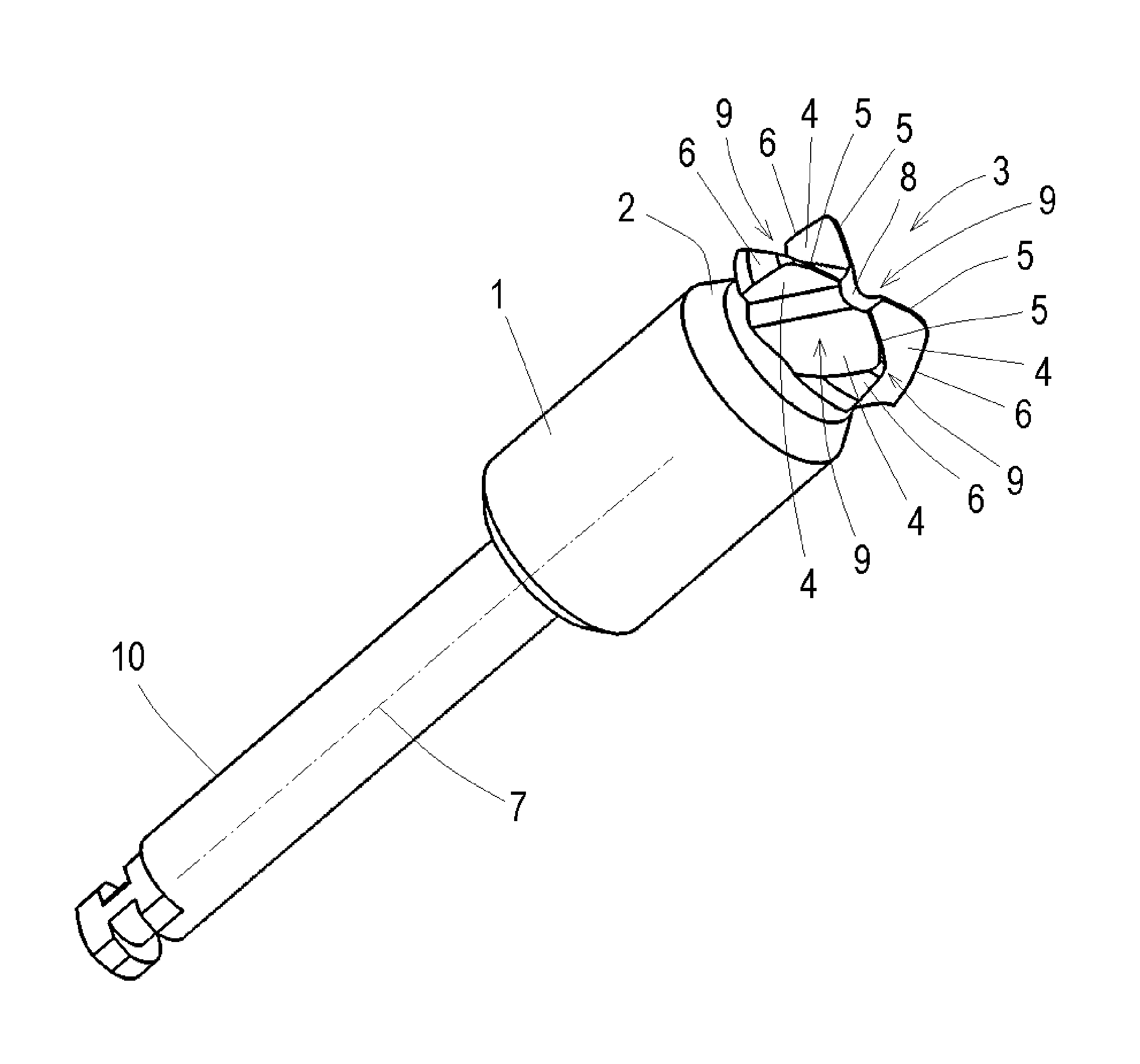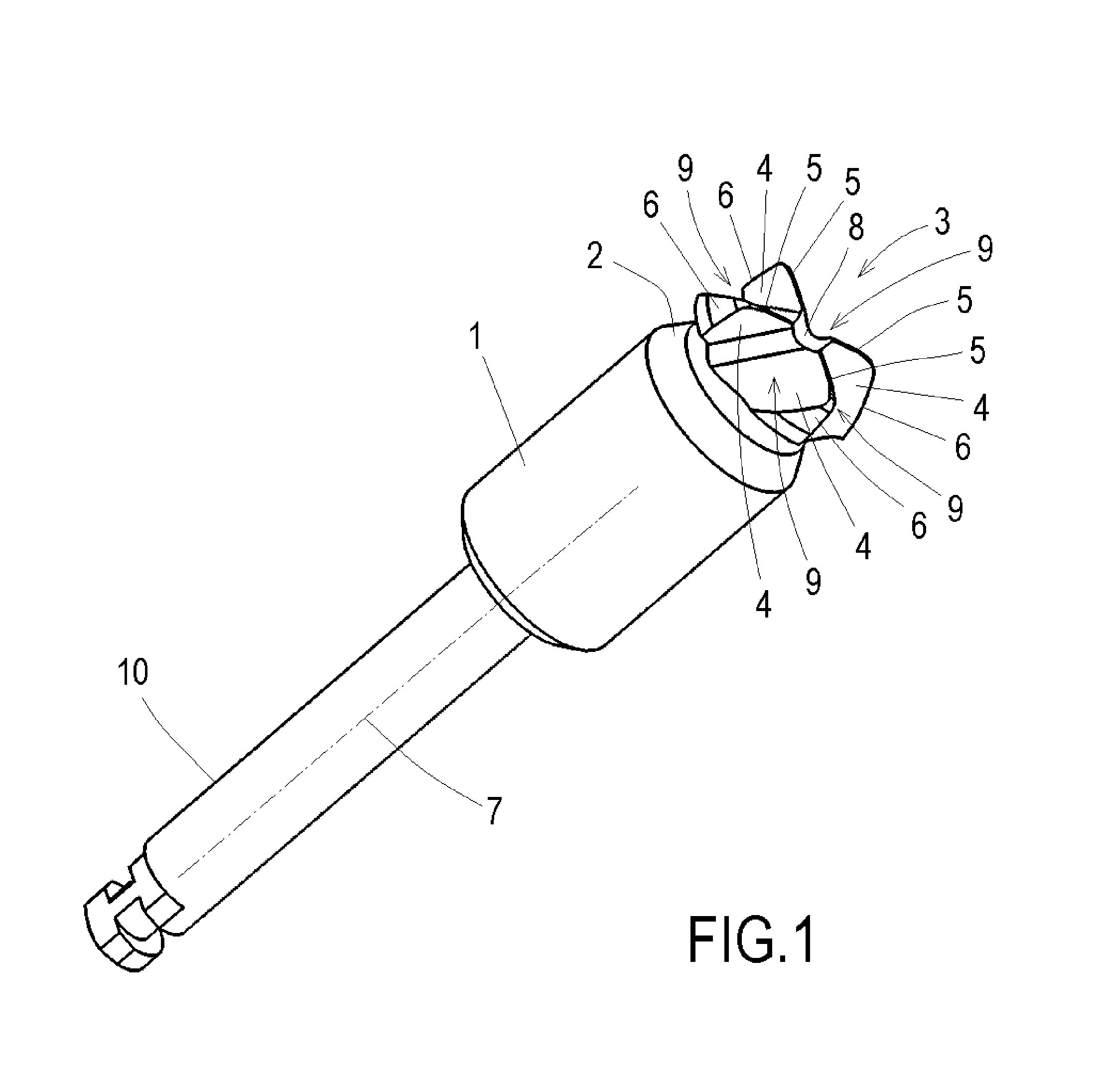Tool for drilling bone tissue, particularly suitable for performing a sinus lift according to the summers technique or for the fitting of extra-short implants
a bone tissue and tool technology, applied in the field of tools for drilling bone tissue, can solve the problems of affecting the fitting of implants in subantral maxillary segments, affecting the effect of implant placement,
- Summary
- Abstract
- Description
- Claims
- Application Information
AI Technical Summary
Benefits of technology
Problems solved by technology
Method used
Image
Examples
Embodiment Construction
[0016]The drawings accompanying this description show three views of the preferred embodiment of the inventive tool.
[0017]As can be seen in FIG. 1, which shows a perspective of the preferred embodiment of the tool, the tool comprises a non-cutting main body (1), a narrowed area (2) and a cutting tip (3). The cutting tip (3) also comprises a series of cutting blades (4), each one of which is provided with a front cutting edge (5) substantially perpendicular to the longitudinal axis (7) in relation to which the tool is disposed and in relation to which said tool is designed to rotate. The cutting tip (3) also comprises a lateral cutting edge (6) substantially parallel to the longitudinal axis (7), more specifically forming an angle of between 0 and 10° with said longitudinal axis (7). The narrowed area (2) acts as an area for collecting bone. In addition, spaces (9) for receiving bone are disposed between the cutting blades (4) and connected to the narrowed area (2), preventing the bl...
PUM
 Login to View More
Login to View More Abstract
Description
Claims
Application Information
 Login to View More
Login to View More - R&D
- Intellectual Property
- Life Sciences
- Materials
- Tech Scout
- Unparalleled Data Quality
- Higher Quality Content
- 60% Fewer Hallucinations
Browse by: Latest US Patents, China's latest patents, Technical Efficacy Thesaurus, Application Domain, Technology Topic, Popular Technical Reports.
© 2025 PatSnap. All rights reserved.Legal|Privacy policy|Modern Slavery Act Transparency Statement|Sitemap|About US| Contact US: help@patsnap.com



